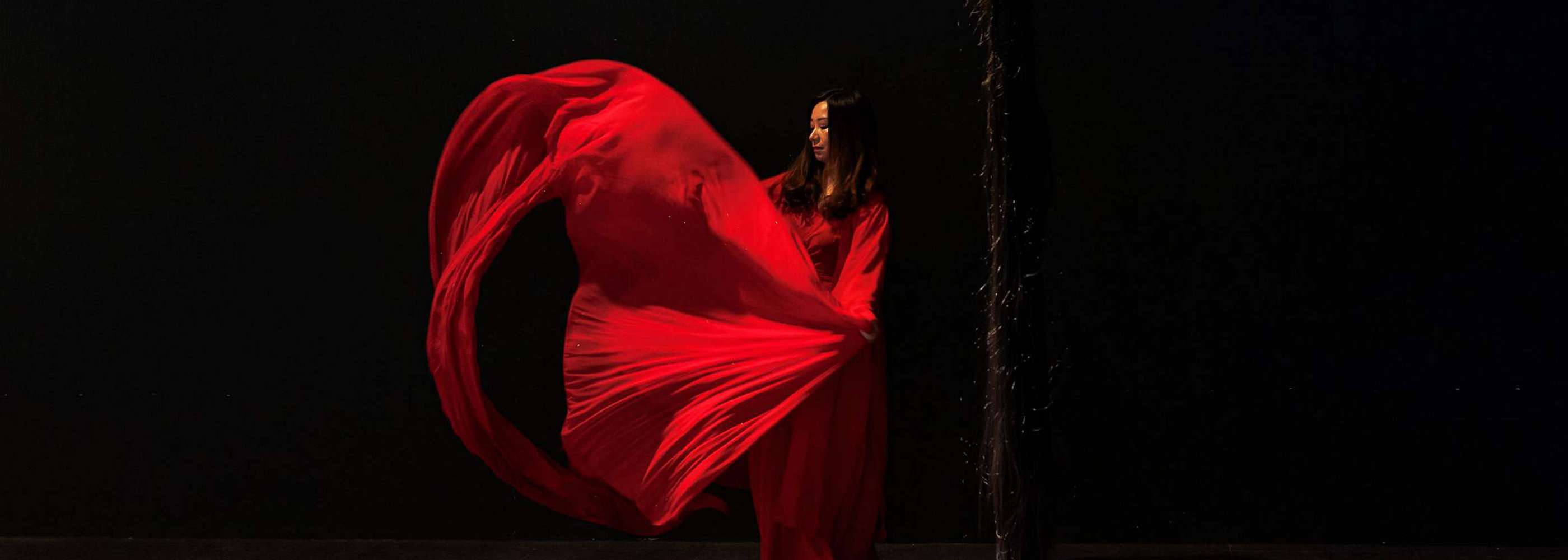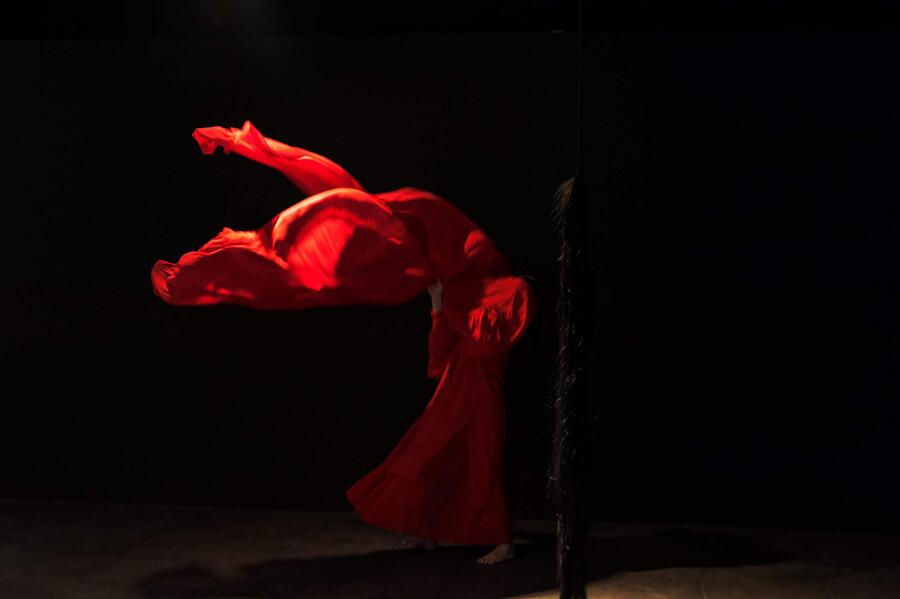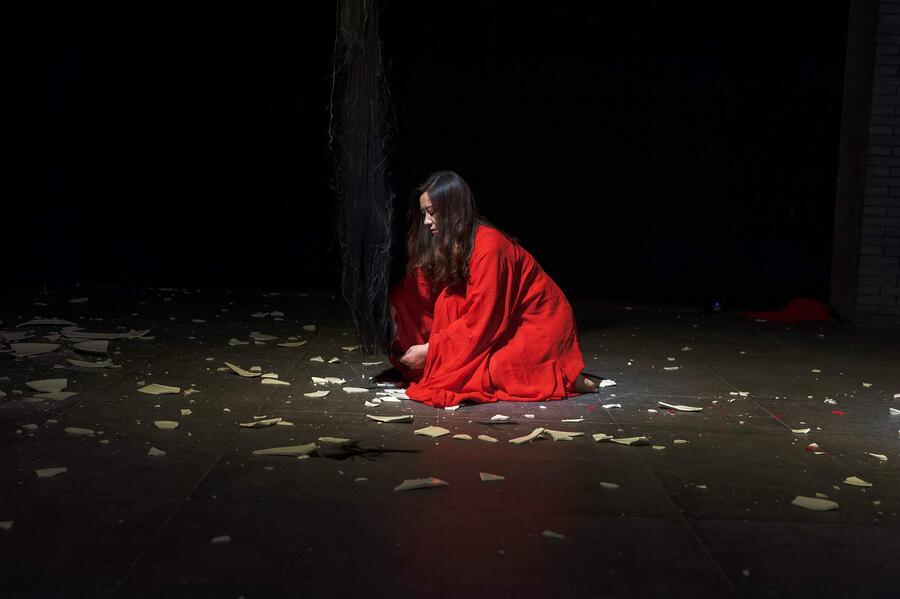

"Medea" is one of the three great tragedies of ancient Greece. Its author, Euripides, is one of the "Three Great Masters of Greek Tragedy." The tragedy tells the story of Medea, the wife of the hero Jason, who had stolen the "Golden Fleece" in the heroic age of ancient times but later abandoned his wife and their children. Medea is a character from Greek mythology, the daughter of King Aeëtes of Colchis. She fell in love with Jason at first sight, the hero of the Argo, and used her magical powers to help him obtain the Golden Fleece. Together, they eloped on a ship. However, upon Jason’s return to his homeland, he fell in love with another woman, and Medea, consumed by sorrow and anger, killed their two children born of her marriage with Jason and poisoned his new lover before fleeing to Athens.
Ten years ago, I watched a play directed by a famous Russian theater director at a friend's house. It was a production of "Medea" featuring only one actress. It featured only one actress who deeply captivated me with her performance, using only her voice, simple props, and movements. That performance conveyed immense power and shock to me. Later, I read the play "Medea" and explored the descriptions of Medea in Greek mythology. Medea's character resonated with some of my experiences, and she has become a prototype for many women in the real world. This time, I attempted to interpret "Medea" through performance art.
When conceiving this work, there was a significant hair-cutting protest movement happening in Iran. A 22-year-old woman named Mahsa Amini was beaten to death by the police for not wearing her headscarf properly, sparking massive protests in Iran and worldwide. Many Iranian women were resisting by cutting their hair, and women from other countries were showing support through the same action. Although Amini's incident was an extreme event in an Islamic state, it underscored the pervasive issue of gender inequality worldwide. And Medea's plight, in a way, represents the fate of women in a patriarchal world. Even though she is a a priestess existing in the divine realm, she shares the fate of earthly women.
I hoped to resonate and initiate a dialogue between ancient Greek mythology and contemporary society. I also attempted to integrate ongoing events and issues that had deeply affected me into my performance. In "Medea," I used a hanging two-meter-long strand of hair as the central element of the performance to symbolize the fate of women. It conveyed a strong spirit of resistance, much like Medea's, even though it was presented in the form of vengeance. In some sense, Euripides portrayed her suffering from Medea's perspective. One of the most crucial scenes in the play is when Medea kills her two children. I laid out a 4-meter-long red cloth, cut it in half with scissors, and fashioned two doll-like figures out of the halves, representing her children. These two figures were placed at opposite ends, and I held white porcelain plates in each hand, forcefully smashing them between the two figures. The shattering sound was piercing and resonated throughout the entire space, symbolizing the state of heartbreak when Medea was betrayed by her lover. I repeatedly made the two porcelain plates collide until all 18 plates were reduced to shards, which were strewn across the floor. I then walked barefoot on the shards. 
In the debris of the shards, I found two red dolls and proceeded to cut them apart with scissors, reenacting the scene where Medea killed her two young children. Finally, I approached the hanging strand of long hair with scissors and slowly cut it strand by strand, letting the cut hair fall to the ground. This scene was inspired by Frida Kahlo's painting, where she worn men's clothing and held scissors, cutting her long hair strand by strand. The painting depicted a similar heart-wrenching image of betrayal by her husband Diego Rivera, but it was also an act of resistance emanating from the depths of her being as a woman. This process of cutting hair also resonated with Iran's hair-cutting protest movement.
In this way, I participated in the tragedy of Medea, hoping to infuse it with a sense of women’s resistance and self-awakening, rather than merely invoking people’s sighs and sympathy.